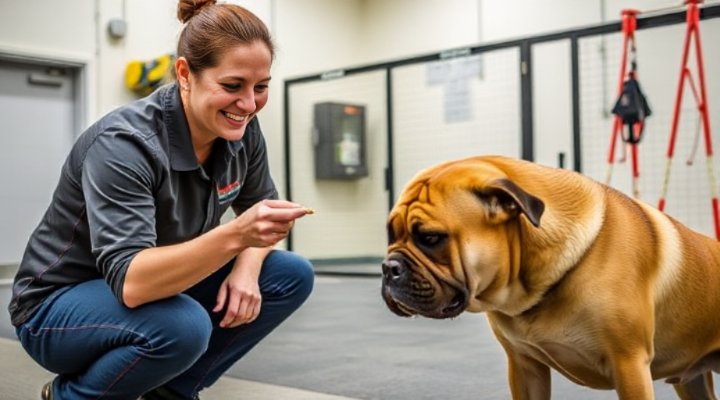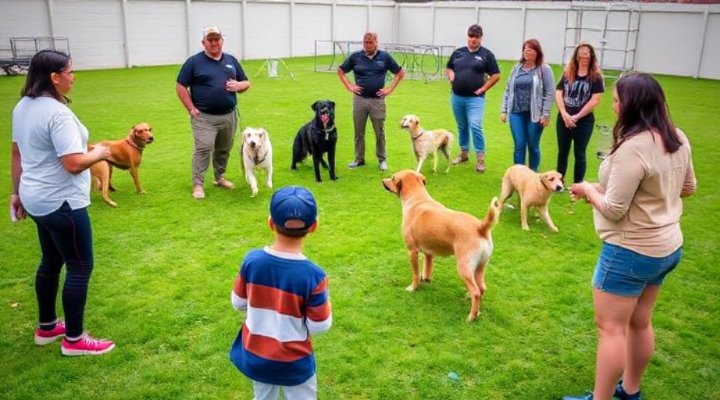Training aggressive dogs can be a challenging yet rewarding experience. Above all, safety should always come first. Therefore, understanding the root causes of aggression is crucial before starting any training program.

Understanding Aggression in Dogs
Aggression in dogs can stem from various factors, such as fear, territorial behavior, or past trauma. For instance, a dog that wasn’t properly socialized as a puppy might react aggressively to unfamiliar situations. Similarly, some breeds may have a higher predisposition to aggressive tendencies, though this isn’t a hard rule.
Meanwhile, it’s essential to recognize the signs of aggression early. Growling, baring teeth, or stiff body language are clear indicators. Consequently, addressing these behaviors promptly can prevent escalation.

Safe Techniques for Dog Training for Aggressive Dogs
Positive reinforcement is the cornerstone of effective dog training for aggressive dogs. Rewarding good behavior with treats, praise, or playtime encourages your dog to repeat those actions. On the other hand, punishment can exacerbate aggression and damage your bond with your pet.
Moreover, consistency is key. Dogs thrive on routine, so maintaining a regular training schedule helps reinforce desired behaviors. For example, if your dog reacts aggressively to strangers, gradual exposure in a controlled environment can help desensitize them.
If you’re struggling, consider enrolling in aggressive dog training near me programs. Professional trainers have the expertise to handle severe cases safely.

Tools for Managing Aggressive Behavior
Certain tools can aid in training aggressive dogs. Muzzles, for instance, are invaluable for safety during initial training phases. However, they should be introduced positively to avoid causing distress.
Additionally, head halters or no-pull harnesses can provide better control during walks. These tools, combined with proper leash training techniques, can significantly reduce reactive behaviors outdoors.

When to Seek Professional Help
While many aggression issues can be addressed at home, some cases require professional intervention. If your dog’s aggression is severe or unpredictable, consulting a certified behaviorist is crucial. They can create a tailored aggressive dog training program for your pet’s specific needs.
Furthermore, if aggression is linked to medical issues, a veterinarian should be your first stop. Pain or illness can often manifest as aggressive behavior, so ruling out health problems is essential.

Success Stories: Transforming Aggressive Dogs
Take Max, for example. This German Shepherd mix was surrendered to a shelter due to his aggressive tendencies. Through consistent positive reinforcement training and patience, Max learned to trust again. Now, he’s a happy, well-adjusted family pet.
Similarly, Bella, a rescued Pit Bull, overcame her fear-based aggression with the help of a professional trainer. Her story shows that with the right approach, even the most challenging cases can improve.
Final Thoughts on Dog Training for Aggressive Dogs
Training an aggressive dog requires patience, consistency, and often professional guidance. Remember, aggression is usually a symptom of an underlying issue, not a personality trait. By addressing the root cause and using positive methods, you can help your dog become a calmer, happier companion.
For more tips on basic obedience, check out our guide on puppy training basics to build a strong foundation for any dog.
Related Keywords: aggressive dog training, safe dog training, effective dog training, dog behavior correction, professional dog training
